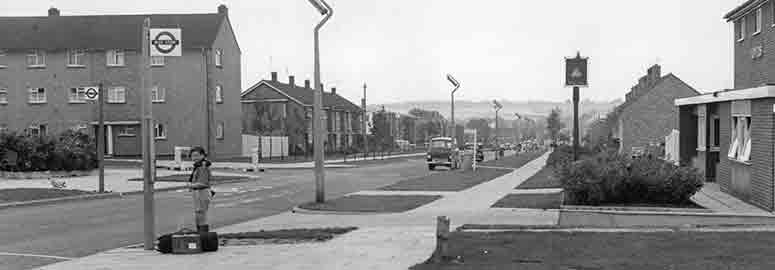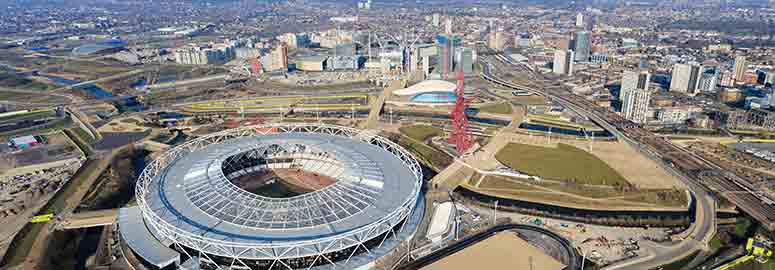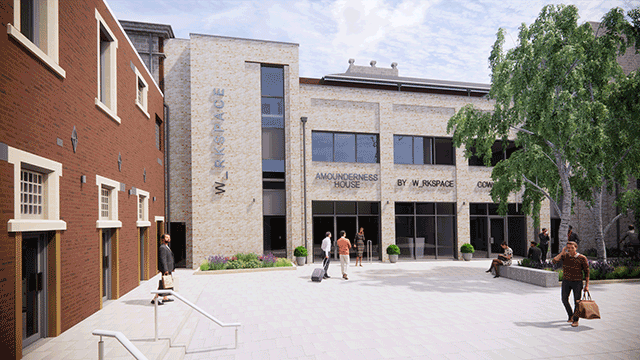Fifteen years on from when I took up the chairmanship of English Partnerships, policy makers are still grappling with many of the same issues that we were trying to tackle then and which dominated the policy landscape in 2002, writes Baroness Margaret Ford, former chair of Grainger, the Olympic Park Legacy Committee and English Partnerships.
Specifically, we need to find a way to create and sustain a level of homebuilding and placemaking that meets the economic and social needs of 21st-century Britain.
In the intervening years, successive Government inquiries and reports have attempted to address the same question. Kate Barker’s magnum opus in 2006 is still probably the seminal analysis of the topic and pretty much every subsequent exercise comes to the same conclusion. We need to be building around 250,000 homes each year in order to meet demand and to stabilise prices.
Last year we accomplished 145,000, which was a seven-year high, at a time when interest rates are at a lifetime low, the economy is in pretty good shape and the housing cycle is benign. So why can’t we do more?
Commentators frequently and correctly point to the high-water mark of the 1950s and 1960s and puzzle over our inability to get anywhere near that level. In 1968, we built 425,800 homes, slightly more than half of which were for owner-occupation. And we kept up a pretty brisk supply of more than 300,000 completions a year up until the mid-1980s, when completions started to tail off, slowly but distinctly.
It is easy to say that stopping building council housing was responsible for this decline. And there is certainly some truth in that, as far as social housing concerned. The contribution of 50 years of housing association development has never reached anything like serious scale in comparison. But I think the full explanation is rather more nuanced. I began to understand it better when, as part of some work I was doing in parliament, I started to dig into the nature and geography of completions across the 20th century – and particularly the latter half of the century.
Stable development
Looking specifically at the completion of private dwellings, it is evident that if you smooth out some peaks and troughs (most of which mirror prevailing macro-economic factors), the contribution of the private developers is remarkably stable across the piece. It averages between 120,000 and 150,000 completions a year across most of the century – what you might call a natural demand for owner-occupied dwellings. Viewed in that way, the 130,000 owner-occupied homes completed last year is pretty much exactly in line with the long-term average. So I am not surprised when numerous Government attempts to get the volume housebuilders to deliver significantly – by which I mean tens of thousands, significantly more housing – rarely succeed. Because I suspect that this part of the market, as currently structured, is operating at or near its long-term average.
The fact is that houses start to be built when a deposit is paid. Housebuilders do not hold stock – and never have, except when obliged to in the sharpest downturn. It is simply not in the interest of their business model, which obliges consented land to be built out as soon as possible. This becomes even more urgent when a start is made on site. The relationship between the economy, mortgage availability and housing starts is inextricably and rationally linked. In fact, you could argue that the market functions really well.
I also believe that this level is probably the natural level of output from the traditional planning system, which delivers incremental growth, by definition.
The challenge to my thinking, though, came when I tried to understand why the rate of completions stayed significantly higher than the long-term average between the early 1970s and mid-1980s, not a period of unalloyed joy, economically. And my investigations, surprisingly, took me right into the middle of the new towns.

I was surprised because I thought I understood a bit about the new town programme. I started my working life in a local authority in Scotland, where the first two years were consumed by transferring the assets of the coterminous new town, which was being wound up. I also spent five happy years as chairman of EP – which, of course, was only a brand name for the two organisations which sat underneath it. One of them was the Commission for the New Towns, which held all the residual assets from the English New Town Programme that were still to be developed.
The reason started to become clear to me when I overlaid the geography of the new towns with the pattern of completions. It was not just that the public building programmes of the new towns contributed hugely to supply, but after policy changed in the early 1970s – and private developers were encouraged to come into the programme – private completions contributed significantly, too. And the reason that this carries on well after the formal new towns programme starts to be wound up, is startlingly simple.
Available land
It is that consented land, complete with social infrastructure and demand, remains available, at the right price, for development. As it progressively runs out, by about the early 1990s, we start to see a return to the average run of completions, as we revert to traditional incremental growth through the normal planning system. Although there are one or two other structural factors at play as well, it appeared to me that one of the key factors to sustaining above-average supply must be the availability of scale development.
So when the government exhorts the volume builders to deliver more, it’s obviously only ever going to solve some of the problem at the margin.
I think the answer is in the government’s own hands: it should provide designated areas for development and the powers and resources necessary to execute a long-term plan. In the first eight years of the London new towns programme, astonishingly, one-third of the planned growth was accomplished – and that was from a standing start, with no infrastructure.
So if the new towns provided a template in the middle of the last century, and if the answer really is as simple as designating and providing land, how could we learn from that programme to deliver the transformation needed in housing supply today?
The new towns programme began after legislation was passed in 1946. The first 11 English new towns were created to accommodate overspill from London. They included Stevenage, which was the first, Harlow, Bracknell and Basildon. The first group was followed, between 1961 and 1970, by a further 10 towns in England, the so-called provincial new towns such as Runcorn and Warrington, and by extensions to existing towns, such as Peterborough and Northampton. As thinking shifted, these latter settlements were driven as much by regional economic policy as they were by housing policy. The programme was completed by designating six towns in Scotland, three in Northern Ireland, and two in Wales.

The programme was, quite simply, an undertaking of the most enormous scale and ambition – certainly judged by today’s standards. It was one of those post-war acts of reconstruction, which combined tremendous political courage with real social vision.
Permissive legislation
The 1946 Act conferred considerable powers on each new town, to “own, manage, dispose of land and property, undertake building operations, provide public utilities” and, in an incredibly permissive legislative sweep, to “do anything necessary to develop the new town”.
Development corporations were created, appointed and funded by central government. Funding was provided by a mixture of loans and subsidies from government, often fixed for 60 years. A favourable regime was put in place for land purchase at – or close to – existing use values and so development corporations were able to assemble the land in a very benign set of circumstances.
Boards of corporations were responsible to ministers and to parliament and local government was, in most locations, reorganised to be coterminous with the development corporation area. Since, in many cases, there was no resident local population, each corporation’s focus was on delivery. The philosophy and tone was expert, and top-down, but not out of tune with the prevailing orthodoxy of the time. Later corporations such as Northampton – which were, in reality, urban extensions – were established along more partnership lines, reflecting both public policy expectations and the very practical point that these were already-established settlements and so required a different model, especially of civic engagement – a feature that is noticeably absent if you research the reports of board meetings and decision-making meetings from the early new towns archive.
Strong leadership was put in place, and it was a feature of the new towns that this leadership, both at board level and at executive level, was incredibly stable and consistent. This also reflected the fact that for the duration of the programme – indeed, up until about 1978/9 – it enjoyed consistent bi-partisan support. From the early 1980s, academic, practitioner and then political focus shifted, for reasons we all will recall, to the inner cities. This coincided with the maturity of much of the programme.
Infrastructure financing
Alongside widely drawn powers, the first wave of new towns benefited from very long-term financing at low rates and a highly benign land assembly regime – and from access to infrastructure financing from central government. This was tougher to achieve, but it is a testimony to the resilience and persistence of the leadership of the new towns that this was accomplished.
The success, however measured, of the programme, was mixed. Inevitably, some towns developed more sustainably than others and some enjoyed more economic success than others. The new towns in the South East, in general, are seen to have performed better than those designated later, with the specific aim of stimulating regional economic growth. But all contributed significantly to providing affordable homes across most tenures – and still do. In my last year as chairman of the EP/CNT, tens of millions of pounds were remitted back to Treasury from continued residential land disposals at Milton Keynes and Warrington and other second-wave new towns.
A partial evaluation of the programme was undertaken in an excellent piece of work by Oxford Brookes University a few years ago for the Office of the Deputy Prime Minister, which attempts to take lessons from the new towns programme to inform policy in the growth areas. It is an interesting report and a fascinating read for anoraks like myself. I would commend it to you.
I have narrowed my focus deliberately to look at the issues of public control of land, because my initial instinct is that this is where the key lessons are for us today.
If, like me, you have spent 30 years working through iteration after iteration of spatial strategies, local plans, transport plans, endless planning inquiries, seemingly interminable planning gain negotiations, judicial reviews, partnership boards, Treasury negotiations, public sector infighting and lack of political direction and consistency, then a new town looked like a pretty great place to have been operating.
But given that the external environment has altered profoundly since that time, are there any lessons that we could usefully learn – and, more importantly, apply?
Noble philosophy
When the Sustainable Communities Plan was launched in 2003, it contained much of the ambition and a noble philosophy that more than nodded in the direction of the new towns. But if you overlay the output that was accomplished in the designated growth areas in its first few years, when there was a housing boom, it just doesn’t stand comparison. Principally, in my view, because government would not commit the resources to execute on the strategy.
So as we enter the final stages of a general election campaign, is there any chance that we are going to see the same political courage and vision that characterised the approach in the late 1940s? And if we did, what would that look like? And what would the key lessons from the new towns programme be?
If I am right and the key to achieving a sustained (and by that I mean a 30-year above-average) supply of housing, then incremental contribution by the traditional planning regime and private housebuilders just won’t cut it. And successive demand-side stimulation via subsidies such as Help to Buy won’t make much of a dent either.
And if you take as givens that the green belt is sacrosanct and that preserving the traditional character and scale of villages and small towns is important, then you are inexorably led to creating new developments. Or regenerating existing ones, if they offer scale.
Different values
There will be many sceptics who say that we can never replicate the scale of the new towns programme because we live in an era when government doesn’t think its role is to invest directly in infrastructure, when we have different values, different and differing concepts of what placemaking means, very different civic expectations and an inclination to legal redress that was unheard of in the 1950s and 1960s.
I understand that, but I would quietly point out that in the past five years we have seen a great example, here on our doorstep, of how we can apply the key lessons of the new towns programme in a modern setting.
A place where Government has committed billions of pounds of expenditure directly into land assembly and infrastructure. Where a development corporation, with full planning powers and the active involvement of local authorities and the local community, is pressing ahead with mixed-use and mixed-tenure developments. Where government, directly and explicitly drawing from the lessons of the new towns, cancelled debt repayments for land acquisition in order to choose a superior return to the public purse over the long term.
I refer, of course, to the Queen Elizabeth Olympic Park. And the reason I know the broad operating model, post-Olympics, was drawn from the new towns experience is that I created it.

You might say that it is an isolated example because the infrastructure and land assembly would not have happened without the Olympic Games, and that is almost certainly true. But whatever the catalyst, it demonstrates that this kind of decision, in the end, is about determining political priorities. About choice around allocation of resources. And about choosing to engage in bipartisan leadership over a period. The Olympic project benefited from all three critical elements. But these were explicit choices that were made – and politics is fundamentally all about choice.
I think it is scandalous that we are unable to provide something as basic and essential as affordable homes across all tenures for our children. And I think most people would agree with that. I really feel that we have reached a tipping point.
Key criteria
So the choice should be about how best to accomplish development in a way that deals with the issue for the long term.
The five key criteria for progress would need to be:
- Bold, national and local political leadership that is bipartisan in designating new growth areas and regenerating existing areas and that can accommodate scale growth. This, ironically, would include some of the original new towns.
- A financial operating model for land acquisition, assembly and – critically – infrastructure, that explicitly recognises that this is a cost to government and is an unapologetically good use of public resources. This is the single most important feature.
- A single delivery mechanism: modern development corporations that combine planning powers with commissioning delivery and are capable of engaging in direct delivery, too. The powers are there, on the statute book in the 2008 Housing and Regeneration Act.
- A governance structure and philosophy that respects local democracy but clearly has a bias to action. The different models operating across the growth areas and in the new Mayoral Development Corporations in London show that this is entirely possible.
- A long-term model and a long-term mindset that incentivises and rewards stability of leadership and stability of partnership.
We have learned so much in the past 50 years about what makes great places. We are so much better educated about sustainability and the built form. We have all of the right tools at our disposal to make a fabulous job of creating new settlements. I really hope that in the next Government, however formed, we finally grasp the nettle.
This article is adapted from a speech delivered at the fourth annual Honor Chapman Memorial Lecture on 16 May. Chapman, who died in 2009, was a partner and international director at JLL. The lecture series was created by Rosemary Feenan from JLL, Andrew Gould, chairman of the UK Green Building Council and former JLL chief executive, and Benson Elliot’s Marc Mogull, to form a lasting tribute to her.











